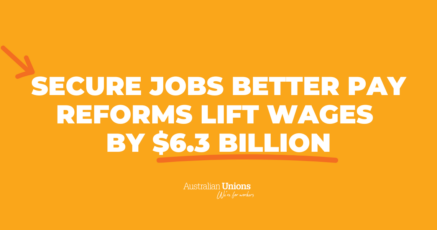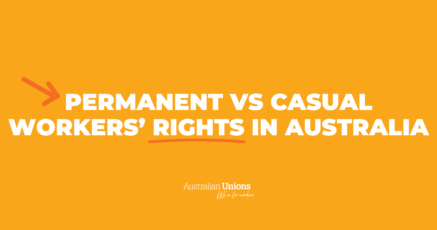When you think about your favourite teachers from school, TAFE or university, you know they’re not there for the pay or prestige. They’re there because they care about their students. So why do almost half of them want to quit the classroom?
A report from the Black Dog Institute found almost half of Australian teachers are thinking about leaving the profession within the next 12 months.
The survey confirmed what teachers in unions have told already told us: they’re overworked, understaffed and burnt out.
NSW schools in strife
With the state election around the corner, union members have put a spotlight onto the dire situation of NSW schools.
Just surviving the current cost of living crisis is excruciating. If you are working as a teacher now, your wage is effectively in the same position as it was ten years ago.
Already poorly paid, NSW teachers are also dealing with the worst student-teacher ratios in the country. Less than ten per cent of teachers in the state say they have a manageable workload.
Students also suffer as a result of mass understaffing: the lack of teachers means classrooms are left with minimal supervision and students aren’t able to get the quality of education they need.
With the Perrottet Government refusing to budge on raising wages, teachers have little choice but to seek other jobs.
Meanwhile, cleaners working in NSW schools are expected to mop floors, clean toilets and empty bins with less than a minute per task.
Could you clean a toilet in 17 seconds? That’s the demand on workers at some Sydney schools – and they’re paid only a $1.38 more than the minimum wage for the privilege.
Union members have delivered the message: a $1.50 pay rise and secure employment is the least the Perrottet Government can do.
And your local school too
As the Black Institute report showed, it’s not just NSW. School staff are struggling across the board.
- Not a single Tasmanian public school is getting the funding needed so students can achieve minimum NAPLAN standards.
- South Australian teachers are working over 50 hours per week, most of which is not face-to-face teaching.
- Victorian schools have almost 1,000 teacher vacancies.
- Three quarters of principals in the ACT have faced threats or violence at work in the past year
- Staff shortages due to terrible pay and extreme workloads mean Tasmanian students wait 140 days to see a school psychologist.
It’s simple. School teachers across Australia need wage rises and stronger support so they can continue delivering quality education to kids.
How you can prevent overwork and burn out
Teachers are not alone when it comes to experiencing high stress levels and burn out.
The 2022 Work Shouldn’t Hurt survey found that more than one in three workers literally couldn’t afford to be away from work – likely a sign of escalating cost-of-living pressures.
Under no circumstances should you ever have to choose between your health and your work. When it comes to issues like burn out or overwork, being in a union is your best form of protection.
Only when you and your colleagues are in a union can you then elect a Health and Safety Representative (HRS) – one of your workmates (or even you) who represent workers in everything related to your health and safety.
HSRs are different from first aid officers or OHS officers because they speak up for you rather than put your employer or profits first. They also have rights to be trained by their union every year and have powers to inspect records and investigate incidents.
Employers are legally required to consult them and workers about all matters relating to health and safety including any changes to the way that work is conducted.
When you have an HSR at your workplace, it makes a difference. Workplaces with an HSR present are far more likely to follow health and safety policies.
If you don’t have an HSR at your work, the first step is for you and your workmates to join your union and elect an HSR. In many workplaces you can have multiple HSRs – there’s power in numbers.
Already have an HSR at work? Check out these resources from Mind Your Head to find out how to look out for you and your colleagues’ mental health.







SHARE:
Why do half of Australian teachers want to leave their jobs?